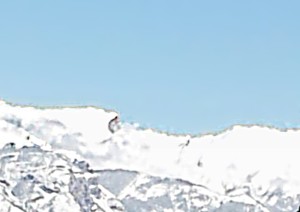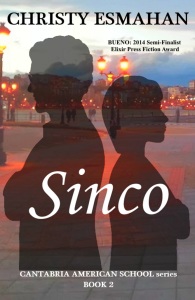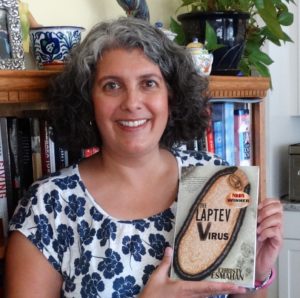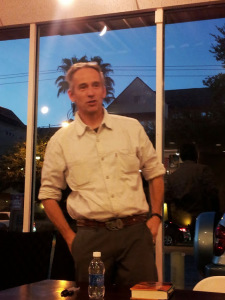
Jasper Fforde speaking at Brazos Book Store in Houston. Image taken by Christy Esmahan.
This week I had not one, but two dreams come true! Dreams come in all sizes and shapes. Some are dreams that one works toward diligently, and others are more like passing wishes—it would be really awesome if I ever got a chance to… This week the stars aligned in the universe, and I found myself swirling in the everyday magic that comes from having experiences filled with joy and wonder. The first was a professional dream: I began writing in earnest in 2008, working on my series of novels which were ultimately published this year, Bueno, Sinco and Brujas. That in itself is a pretty big dream come true, but on Tuesday evening I was given the opportunity by the lovely folks at Katy Budget Books to do my first Book Signing ever, and on top of that, the event went swimmingly well. Many of my friends and neighbors showed up to support me, but I also had the chance to convince some nice strangers to try my novels, and that was very gratifying. I hope to have many more book signing events in the future, but this one will always have a special place in my heart.
My second dream was seeing one of my hero-authors in person: on Wednesday night I got to meet Jasper Fforde when he did a book talk and signing at Brazos Book Store in Houston. I have lots of authors I like—I can talk excitedly about books for hours on end—but there are only a handful of people that I call my hero-authors: Charles Dickens, Mark Twain, J.R.R. Tolkien, J.K. Rowling, Philip Pullman and Jasper Fforde. That’s it. There’s no hope of meeting the first three, so you can imagine my delight when I found out by chance that Fforde would be in town! I live 30 miles from the store, and yes, I had other commitments, but this was a special dream so I cleared my schedule and got myself there, right smack in the front row.
I’ve admired Fforde since 2003, when I read his first novel, The Eyre Affair. Most of Fforde’s early published works are more enjoyable if the reader has read and remembers a broad spectrum of books by other authors in order to greater appreciate and thoroughly understand the hilarity of his plots. As he described his writing style in his talk, he said he liked to “move the furniture around in people’s brains–put a sofa on top of a hat stand and look at it from there.” And boy, does he have a creative and talented mind for doing this!
The Big Over-Easy was the next book I read, and my experience as a mother of young children, whom I doused in nursery rhymes, helped me to further enjoy his Nursery Crime narratives. The Fourth Bear was also extremely entertaining, and my training as a scientist primed me further for enjoying his questioning at the thermodynamic level of the temperature of Mama Bear’s porridge, which makes no sense if you consider that there is no way it should be colder than Baby Bear’s porrige unless some of its volume was reduced by interference from a hitherto undisclosed fourth bear. How awesome is that?
In his Last Dragonslayer series, Fforde also tickled my fancy when he described the “fact” that there were six different types of Quarkbeasts, (terribly frightening monsters with shark-like rows upon rows of teeth who eat cans of dog food as treats, can and all) and these beast come in six flavors: Up, Down, Top, Bottom, Strange and Charm. If you remember your high school physics, you can’t help but be amused! I was listening to this book on audio and I found myself pounding the steering wheel and laughing out loud when the narrator got to this part.
That’s nice, you’re probably thinking, a very creative mind and entertaining books. Is that all it takes to be a hero-writer for you, Christy? Good question, and the answer is no. Where Fforde crosses the line from “very good writer” to “sheer genius” is in his Thursday Next books where he takes on the act of reading in a refreshing and altogether unusual and creative fashion. His explanation of the ImaginoTransference system is nothing short of brilliant, so let me quote a post on in his Phorum 5
Book Operating Systems:The operating system that runs every book from within using a system of ImaginoTransference to project the author’s ideas into pictures within the reader’s head. The first system used was OralTrad, upgraded ten thousand years later by the rhyming (for easier recall) OralTradPlus. For thousands of years this was the only Story Operating System and is still in use today. The system branched in two about twenty thousand years ago; on one side with CaveDaubPro, (fore-runner of PaintPlusV2.3, GrecianUrnV1.2, SculptMarble V1.4, and the latest, all- encompassing SuperArtisticExpression-5). The other strand, the Picto-Phonetic Storytelling Systems, started with ClayTablet V2.1 and went through several competing systems (WaxTablet, Papyrus, VellumPlus) before merging into the award winning SCROLL, which was upgraded eight times to V3.5 before being swept aside by the all new and clearly superior BOOK V1. Stable, easy to store and transport, compact and with a workable index, BOOK is still the operating system of choice. Current System in use today: V8.3.
So basically, what he’s saying is that there is an operating system, a kind of computer program, if you will, that allows readers to take the little black marks that we see on a page and turn them into the full-blown mind-movies we get when we read. And like all systems, Fforde goes on to explain in his novels, it can sometimes go down. When this happens, steps must be taken to keep us, humans in the Outland, from finding out. The program therefore puts us to sleep so we don’t realize that the failure is occurring. Like most systems, it fails more often at the end of the day, when it’s been used continuously by humans all around the world, and that’s why we will often fall asleep reading at night. Like I said, the man is a genius!
I also love how he dives into the formation of characters, with varying depths of personalities and back stories–his explanations have affected the way I view other books and even the way I view my own writing. All of this is what makes him an author-hero in my mind.
If you like books that challenge you to use your imagination, and which are not afraid to step into several genres at once, mixing time-travel with Ms. Havisham, a nice werewolf detective who will help with literary crimes, and Shakespeare, all the while teaching you about the dangers that “Adjectivores” and other “Grammasites” can and do cause to our language (if you text, you’ve seen the damage!) I encourage you to read, nay, devour all of his novels. I have, and am ready to re-read some as I wait impatiently for the next ones to be published.
And, if you ever get a chance to attend one of his speaking engagements, as I did this week, do yourself a favor and go. He is a dynamic, charismatic and entertaining speaker, every bit as fun and thought-provoking as his novels. Meanwhile, check out his website and enjoy this genius who lives and walks among us.
If you enjoyed this blog post, you might also like my series of novels, Bueno, Sinco and Brujas, which takes place in Santander, Spain.



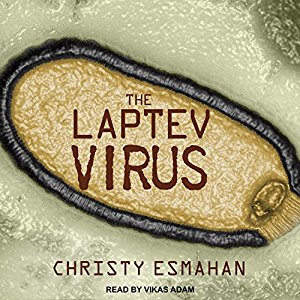
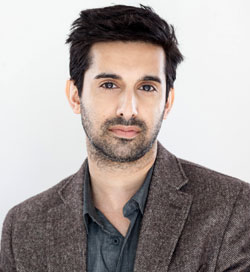
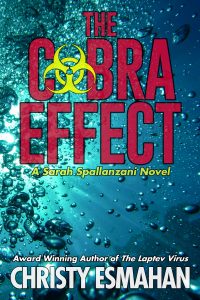

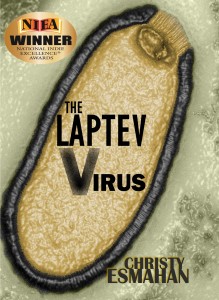
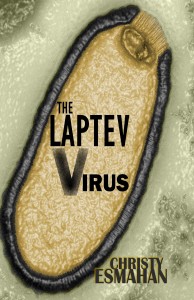 (I mean the book, not the virus!)
(I mean the book, not the virus!)